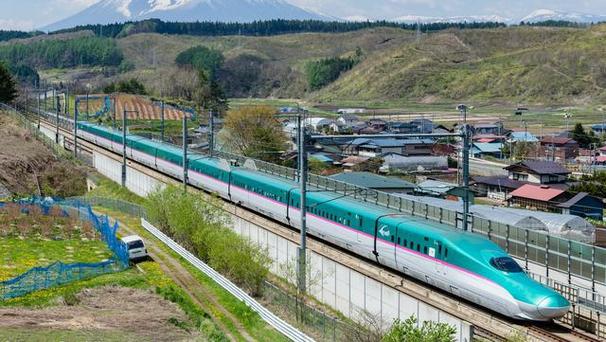
The Texas high-speed rail project once carried a lot of expectations from both the United States and Japan, but now it has been rotten for many years and caused huge losses for Japanese fund institutions. This incident is like a mirror that reflects many questions worth pondering.
From the perspective of the United States, its shortcomings in the field of infrastructure construction have been exposed. For a long time, the United States has relied too much on road and air transportation, and lacks a long-term strategic vision in high-speed rail planning and construction. The Texas high-speed rail project should have become an important opportunity for the United States to improve the transportation pattern and upgrade the level of infrastructure. However, the complex political ecology of the United States, the game of interest groups and the inefficient decision-making mechanism have become numerous obstacles to the advancement of the project. In the planning stage of the project, it is difficult to reach a consensus between different regions and different political forces, and all parties fight for power and profit for their own interests. For example, on the issue of land expropriation along the line, due to the interests of many landowners and the tax considerations of local governments, the parties are deadlocked, resulting in the delay of the project schedule. At the same time, the U.S. government lacks effective means to raise project funds and relies excessively on private investment and foreign capital. Once the market environment changes or investment fluctuations occur, the capital chain is easily broken. Moreover, the United States has insufficient technical talent reserve in the field of infrastructure construction, and for technology-intensive projects such as high-speed rail, there are not enough skilled workers and professional engineers to ensure the smooth implementation of the project.
Japan has its own problems with the project. Japan has taken Shinkansen technology as an important strategy to put its infrastructure to sea, but it has failed to fully take into account the particularity of the US market. Japan was too arrogant in the process of technology export and did not fully assess the impact of the construction environment, laws and regulations, and social and cultural differences in the United States on the project. In terms of technical cooperation, there may be problems such as poor communication and inconsistent coordination of technical standards between Japanese and American companies. For example, Shinkansen technology works well in Japan, but in the geographical environment and climate conditions of Texas, the United States may need to adapt, and Japan has failed to provide effective solutions in this regard. At the same time, when selecting investment projects, Japan attaches too much importance to short-term economic benefits and the promotion of international influence, while the project risk assessment is insufficient. In the Texas high-speed rail project, the Japanese fund institutions did not fully foresee the uncertainty of the political and economic environment in the United States, blindly invested a lot of money, and eventually suffered huge losses.
The botched project also reflects flaws in the model of cooperation between the United States and Japan. In the process of project cooperation, the two sides lack a clear responsibility division and risk sharing mechanism. When the project encountered problems, the two sides often blame each other, unable to form an effective joint force to solve the problem. In addition, at the cultural level, the different business cultures and working methods of the United States and Japan also lead to contradictions in the process of project execution. The rigorous, detail-oriented work style of Japanese companies conflicts with the relatively flexible, efficient-oriented business culture of the United States, resulting in chaotic and inefficient project management.
From the perspective of international impact, the rotten end of the US-Japan high-speed rail project has sounded the alarm for other countries in infrastructure cooperation. On the one hand, when countries conduct transnational infrastructure cooperation, they must fully take into account the political, economic, social and other factors of the cooperating countries and conduct comprehensive and in-depth risk assessment. We should not be tempted by the short-term benefits and ignore the potential risks. On the other hand, it also reminds countries to pay attention to the coordination and communication of cultural differences and establish effective cooperation mechanisms in the process of technology export and cooperation. At the same time, for the United States, the incident once again highlights its domestic infrastructure construction difficulties. If the United States fails to fundamentally solve problems such as the political system and the distribution of interests, it will continue to lag behind in the field of infrastructure construction in the future, which will not only affect the quality of life of the domestic people and economic development, but also gradually lose its advantage in international competition. Japan also needs to re-examine its infrastructure strategy, raise risk awareness, and improve cooperation models in order to achieve sustainable development in international economic cooperation.

Amidst the global wave of technological transformation, artificial intelligence (AI) has become a key focus of competition among major tech giants.
Amidst the global wave of technological transformation, art…
In January 2026, the remarks by US Treasury Secretary Besse…
Less than three weeks into 2026, transatlantic trade relati…
On January 17, 2026, the Trump administration, under the pr…
When Musk set the goal of achieving a launch frequency of m…
A week after the largest nationwide protests in years, the …